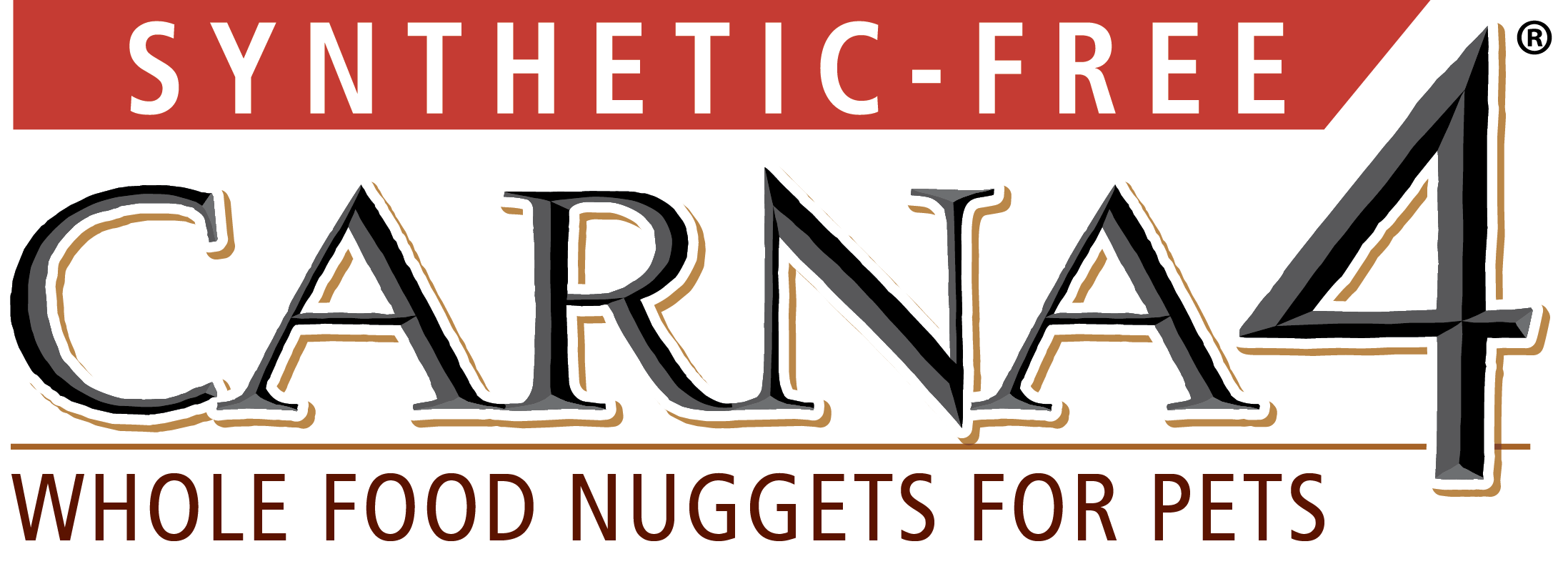By: Maria Ringo, HD, DHMHS, B.GS, Carna4 Director
(Re-printed with permission from Dogs Naturally Magazine, September/October 2011)
 Several years ago, I was walking through the woods with my dog, Che and a friend. We often walked these particular woods where dogs were welcome off-leash, and everyone was friendly. My human companion and I were lost in a deep conversation about some political topic of the day and weren’t really paying close attention to Che’s comings and goings. Che was a champion Bullmastiff male, about three years old and weighing in at about 130 pounds, so his whereabouts were easily identified if you just listened for the sounds of crashing underbrush.
Several years ago, I was walking through the woods with my dog, Che and a friend. We often walked these particular woods where dogs were welcome off-leash, and everyone was friendly. My human companion and I were lost in a deep conversation about some political topic of the day and weren’t really paying close attention to Che’s comings and goings. Che was a champion Bullmastiff male, about three years old and weighing in at about 130 pounds, so his whereabouts were easily identified if you just listened for the sounds of crashing underbrush.
All of a sudden, I heard whimpering and I turned to see Che coming toward me with his head and face swollen up, his upper lip and eyelids huge, and an intense look of discomfort in his eyes. His head was naturally as big as a basketball, but clearly something awful had happened. It appeared he had been stung by an insect, likely a wasp, and had reacted immediately. He had red blotches around his midface, which was hot and pale, and his eyes were closing up as I watched. He was miserable and lethargic, and sat at my feet breathing heavily. I had to do something quick!
At that time in my life, I was working as the office manager for a busy homeopathic medical practice and was already deep into homeopathy. I had never vaccinated Che (or his sister Sula) and used only natural remedies to get my dogs over illnesses and accidents. I was a big fan of Juliette de Bairacli Levy and had recently co-founded a company making one of the first commercial raw food diets for dogs and cats called Sojourner Farms.
Luckily, I carried first aid remedies everywhere I went. I knew from my own experience that Che needed Apis, fast. I dug an Apis 30c out of my kit, pried open his mouth and threw the pellets in. Nothing happened. I waited a few minutes. Still nothing changed. This was getting scary. Che’s eyes were little slits, his crying was breaking my heart, and I worried that the choking sound he was making was his throat closing. I dreaded the thought of taking him to the vet which I couldn’t afford, and was only going to lead to questions about whether or not he was up to date on his shots (to which I always answered Yes, because he was as up to date as he would ever be). What was wrong? Why didn’t the Apis work in this acute situation, as it had so many times before with the other dogs, and patients of our clinic?
Then I remembered something I had learned about acute/chronic remedy relationships. I didn’t understand it at the time, but I had been taught by Margaret Paris, one of the practitioners I worked for, that Natrum muriaticum was the chronic of Apis and that if you needed one and it didn’t work right away to try the other in a really low dose first.
So I gave Che a dose of Nat mur 6x, waited about a minute, then redosed the Apis 30c. BINGO! The swelling started to come down within another minute. I am sensitive to remedies, and can feel the moment when the energy shifts in the patient and you know the remedy is active. Huge relief flooded over me as his swelling came down. By the time we got home 15 minutes later, his eyes were opened, the choking sounds were absent, and he wanted a snack. All was back to normal!
This incident happened over 22 years ago and the lesson has stayed with me ever since. I have been a professional homeopath with a clinic of my own now for several years and I sometimes use the relationships between remedies to guide my prescribing when a patient I am treating for a chronic condition comes down with an acute, or if a well selected remedy is stubbornly ineffective.
This knowledge is particularly useful when treating animals as they react so quickly to remedies, which are most often prescribed for physical ailments. Treating animals is such a delight in this respect: you know if the remedy is working or not pretty quickly.
If you are confident your pet needs a particular remedy for an acute situation but it is not working at all after a few doses, you might try giving a very low dose of its chronic counterpart before you re-dose.
Remedy relationships are derived from similarity of origin, similarity of action, and known complementary action: the second drug completes the cure which the other begins but is unable to finish.
This is Classical homeopathy, and not some modern twist of combination prescribing. Many of the old masters used their understanding of acute/chronic relationships to cure their cases. Many times in the management of a chronic illness, the remedy that conforms with an acute experience of that illness can lead you to the cure, not with that acute remedy but with its chronic counterpart. Taking that a step further, Dr. Elizabeth Wright Hubbard explained the use of remedies not just in complimentary pairs but in a series e.g. Calc – Lyc – Sulph and Ignatia -Nat mur – Sepia. For more on this read her book, “A Brief Study Course in Homeopathy.”
There are many ways to use remedy relationships, including using them as antidotes when necessary. You can find Dr. Gibson Miller’s more detailed chart, “Relationship of Remedies and Their Duration of Action” in the back of Kent’s Repertory 6th Edition, enriched edition.
The acute crisis, such as the one Che experienced, was not connected to any chronic illness that I knew of; however knowing the remedy relationship to the clearly obvious acute remedy helped me immensely and may have saved his life.
Maria Ringo HD, DHMHS, B.GS is a classical homeopath and owner of North Toronto Homeopathic Medicine & Wellness Clinic. She cofounded Sojourner Farms Natural Pet Products in 1985 and recently co-founded CARNA4 Handcrafted Pet Food with her husband David Stauble. She may be contacted at 416-792-2108 or maria@nthm.ca.

